Don’t know what you’re doing? Get the Killing BV Treatment Guide and learn how to use Fluomizin effectively.
Fluomizin is a broad-spectrum, non-antibiotic, non-drug antimicrobial (dequalinium chloride) used widely to treat bacterial vaginosis (BV) and aerobic vaginitis (AV).
Benefits of Fluomizin vaginal treatments
- 6 x 10mg dequalinium chloride vaginal tablets per pack
- Save $5 per pack for 2 or more packs
- Free global shipping
- Used for mystery infections/imbalances
- One-per-night vaginal dose for 6-12 nights for BV/AV
- Non-toxic, not absorbed, safe in pregnancy and breastfeeding/nursing
- Effective against a range of BV and AV-causing microbes and yeasts
- Non-antibiotic, non-resistance-forming
Note: Product may arrive in a foreign language! Fluomizin is a Swiss product; however, we source Fluomizin from a variety of countries. For the English insert, please download the Fluomizin Information Booklet (PDF).
About dequalinium chloride
Dequalinium chloride, the active ingredient in Fluomizin, is an anti-infective and antiseptic drug, active against some of the bacteria that cause bacterial vaginosis.
Fluomizin is used to treat bacterial vaginosis, inserted into the vagina each night for six nights or as recommended by your healthcare provider.
Safey and warnings of Fluomizin
Do not use Fluomizin if:
- Have over 50% lactobacilli on a microbiome test
- You are allergic to dequalinium chloride or any of the other ingredients in the tablets
- You have vaginal or cervical ulcers
- You have never had a menstrual period
Warnings and precautions when using Fluomizin
- Avoid intravaginal soap, spermicides and vaginal douches during treatment with Fluomizin.
- Unprotected intercourse while using Fluomizin or when you have bacterial vaginosis is not recommended.
- Fluomizin is safe to use with latex condoms but may reduce the effectiveness of non-latex condoms or diaphragms. Use alternative methods of contraception for at least 12 hours following treatment.
- Stop using Fluomizin vaginally if you have heavy menstrual bleeding, and resume after your heavy flow is finished.
- If symptoms persist after treatment, you may have bacteria that is unaffected by Fluomizin, and you should be thoroughly tested by your doctor and seek other appropriate treatment.
Using Fluomizin during pregnancy and breastfeeding
Talk to your doctor or pharmacist before using Fluomizin if you are pregnant or breastfeeding for personal advice. Fluomizin is considered safe during pregnancy and breastfeeding because it is poorly absorbed into the bloodstream.
Recommended dose and administration of Fluomizin
The recommended dose of Fluomizin is one tablet inserted deep into the vagina before bed each day for six days or as prescribed by your healthcare provider.
Instructions for using Fluomizin vaginally
- Insert every evening before bed
- Wash your hands before opening blister pack and removing the tablet
- Lie down with legs slightly bent, and using a clean finger, insert one vaginal tablet deeply.
- Don’t use Fluomizin during heavy menstrual bleeding – wait until it’s finished, and then resume use.
- Do not stop treatment early even if symptoms abate. Fewer than six days of treatments may result in treatment failure.
- Fluomizin ingredients do not dissolve completely and the remainder may, with gravity, appear in your underwear. This is normal and does not affect the effectiveness of the treatment. The tablets do not stain, but you may want to use a panty liner or pad during use.
- The tablet needs moisture to dissolve, so if your vagina is dry, put a drop of water onto the tablet before insertion.
What to do if you use too much Fluomizin or forget a dose
You run the risk of vaginal irritation and ulcerations if you use more than the recommended dose of Fluomizin. Do not double the dose if you forget a dose.
Possible side-effects of Fluomizin
- Burning and itching, which can be worse at the start of treatment, but usually starts to get better with further treatments. Continue the treatment.
- Vaginal discharge (1 in 10 people)
- Vaginal yeast infection (thrush) (1 in 10 people)
- Vaginal bleeding and pain (1 in 100 people)
- Vulvovaginitis (1 in 100 people)
- Bacterial vaginosis (1 in 100 people)
- Fungal skin infections (1 in 100 people)
- Headache (1 in 100 people)
- Nausea (1 in 100 people)
- Vaginal ulcerations, particularly if the vagina was already damaged prior to treatment (frequency not known)
- Uterine bleeding (frequency not known)
- Vaginal redness (frequency not known)
- Vaginal bleeding (frequency not known)
- Bladder inflammation (frequency not known)
- Allergic reaction (rash, swelling, itching) (frequency not known)
- Fever (frequency not known)
Storage of Fluomizin
- Do not use after the expiry date
- Store safely in a cool dry place out of reach of children
Ingredients of each Fluomizin tablet
- Active substance dequalinium chloride, 10mg in each tablet
- Lactose monohydrate
- Cellulose
- Microcrystalline
- Magnesium stearate



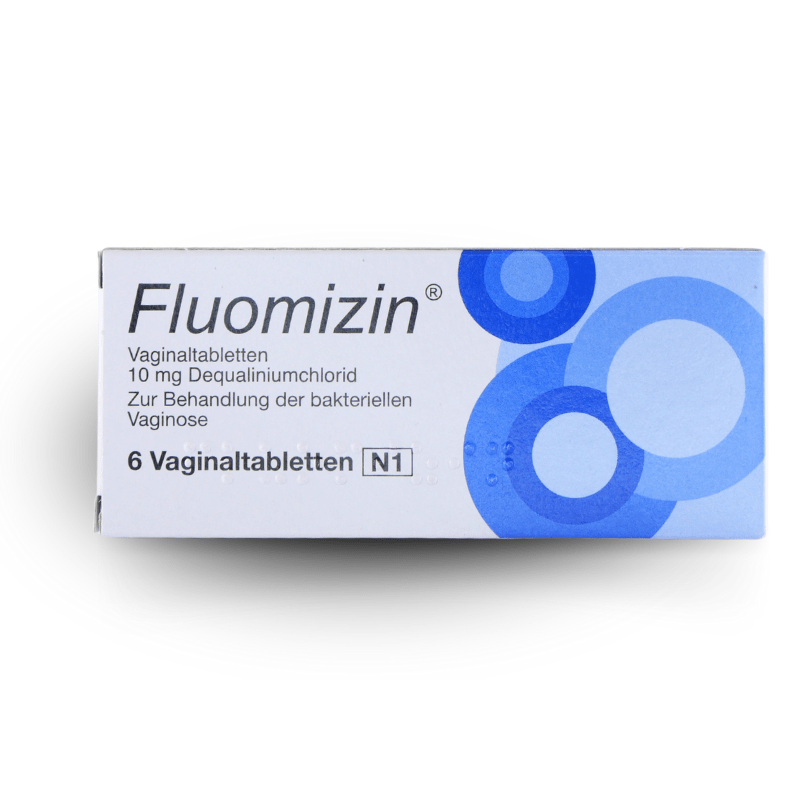
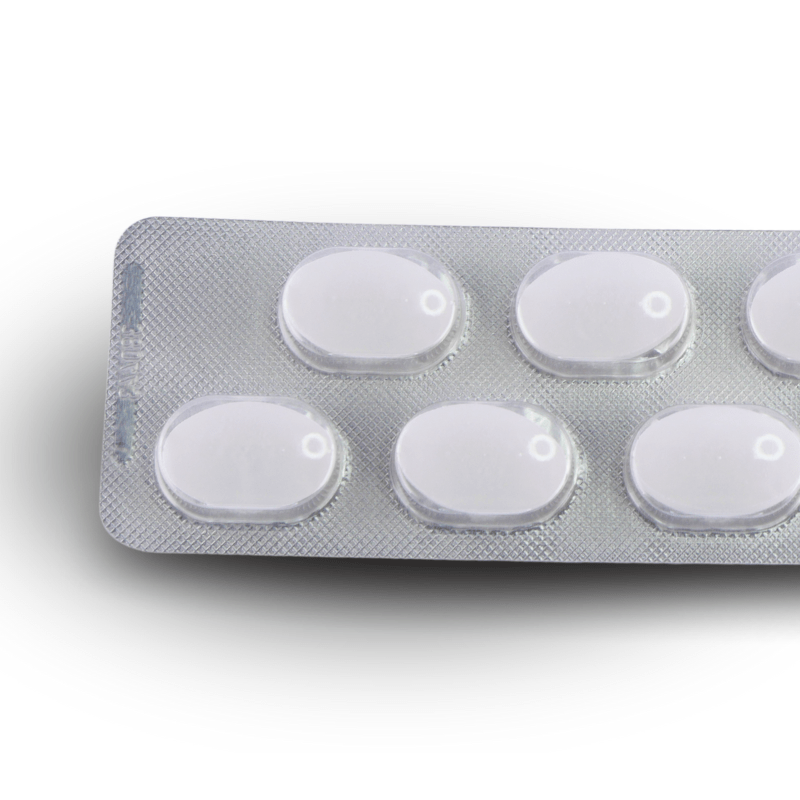


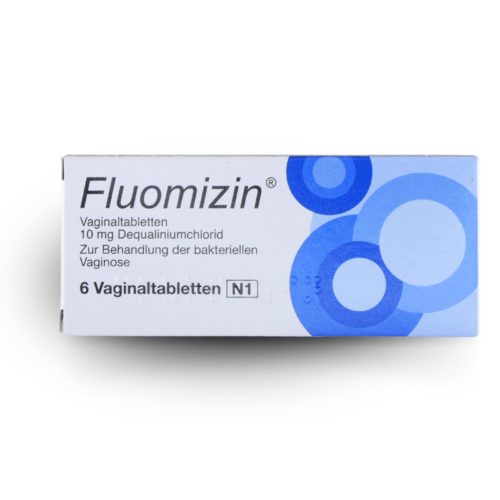
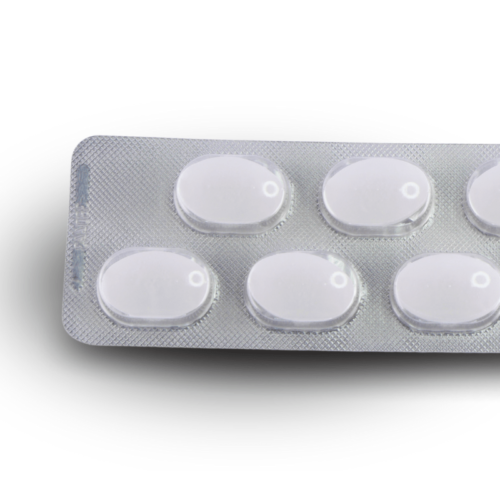
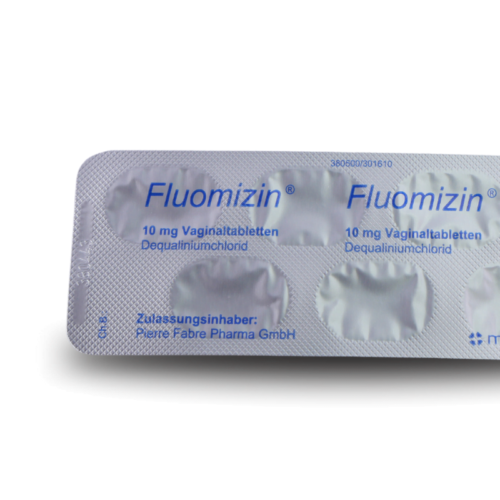
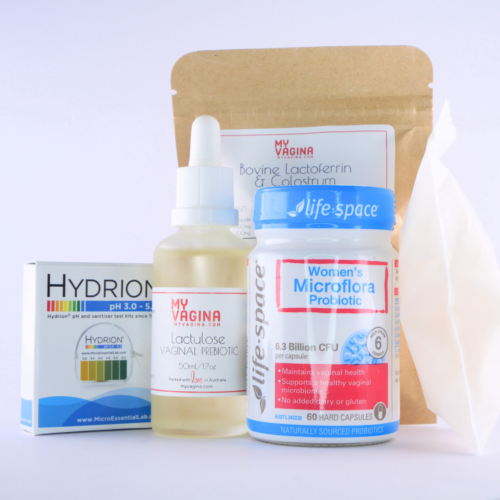
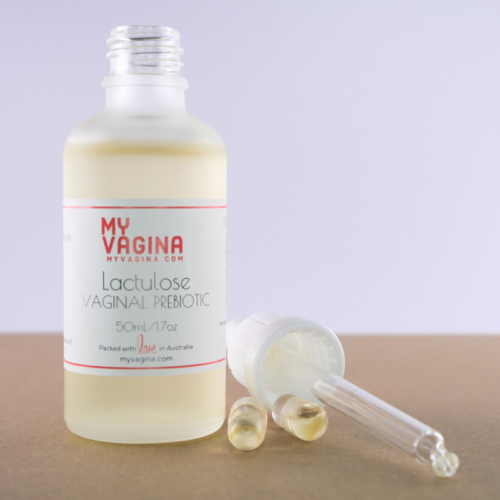



Amelia Armstrong –
EXCELLENT PRODUCT – of course only the Europeans have this, not us Americans except via myvagina.com, it’s just easy and nice to use and works really well for me. I used one six pack and voila, BV B Gone!
Jan –
I found Fluomizin very drying. It did not dissolve well and if I put it under the tap, as advised, it started to fall apart and was very difficult to insert. This ended up with some of the tablet on my vulva and around the urethra. By day 3 had had sharp stabbing pains around my urethra and vulva, but not vagina. I stopped using it after I had used 3.
Hopefully it suits other people better than it suited me.
Amelie Prince –
Fluomizin worked for my BV. I had issues for eons and repeat antiBx treatments were not working. The tablets break apart inside the hoohar, and work their magik!
Hope –
My story: BV and me have been accompanied for nearly two years. An ex of mine kindly gave it to me, and even though we have been broken up for over six months, it is still my constant companion. A miserly beast, it is.
I found My Vagina and was so relieved, as it seemed someone finally knew what to do with vaginas that wasn’t antibiotics – which haven’t ever worked for more than week for me.
I tried Fluomizin, alongside the Lifespace proboitics My Vagina recommends, and I did three packets, with a few days break in between where I put in a probiotic morning and night, and it has now been the longest time in the past two years without symptoms that I’ve had. It is now coming up 4.5 weeks, and I have had my period, and wow, holy moses, NO ODOUR. I could cry. Honestly, this has given me so much hope. I tell all my friends about this website, because it’s the only place on earth that has provided me with the best information and treatments to cure myself.
Thank you, to everyone, all, you all at My Vagina, no matter what your job is, you are all angels!
ShisandraMilandra –
Perfect white tablets, insertion a breeze, works from the start. Small six packs, don’t need all, may need twice. Love.
Julia –
Fluomizin a complètement guéri mes problèmes. Merci.
P –
Este producto es muy fácil de usar, el envío fue súper rápido y ha solucionado mi problema. Muchas gracias por un producto excelente.
Kit_Panko –
I’ve used Fluomizin several times over the years, and it works super well for BV symptoms.
Wendy Carol –
I purchased your e-book and it helped me to fix my BV. I used the European over the counter suppository product Fluomizin which was suggested. I’d never heard of this before. Really thankful!